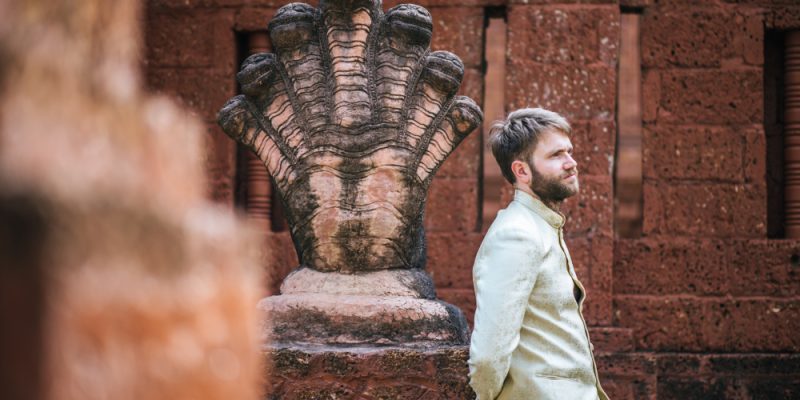Fatehpur Sikri India: 9 Cultural Insights Every Visitor Should Know

Tucked away near Agra in the Indian state of Uttar Pradesh, Fatehpur Sikri is a UNESCO World Heritage Site that tells stories of India’s Mughal era like few places can. Built by Emperor Akbar in the 16th century, this city is not only an architectural masterpiece but also a hub of rich cultural narratives. Before you visit this red sandstone wonder, there are 9 cultural insights that will enrich your experience and help you see beyond the monuments.
1. Akbar’s Vision: A City Built on Unity and Tolerance
One of the most fascinating cultural insights is that Fatehpur Sikri was designed by Emperor Akbar as a symbol of religious harmony. Akbar, known for his inclusive views, founded the city to honor the Sufi saint Salim Chishti, who had predicted the birth of his heir. He brought together Hindu, Jain, Islamic, and Persian influences to shape the city, both in architecture and ideology. Knowing this, every arch and corridor starts to feel like a chapter in a multicultural tale.
2. Architecture as Cultural Dialogue
Fatehpur Sikri is a textbook of Indo-Islamic architecture, blended with Jain and Rajput elements. Buildings like Diwan-i-Khas (Hall of Private Audience) and Panch Mahal reflect a hybrid aesthetic not common in most Mughal sites. Carvings of lotus flowers, Hindu bells, and even Jain symbols exist side-by-side with Islamic calligraphy. This deliberate blend of artistic traditions was Akbar’s way of building not just a city, but a statement of unity.
3. The Legacy of Salim Chishti’s Tomb
Inside the complex lies a sacred white marble tomb of Sheikh Salim Chishti, a revered Sufi saint. His tomb attracts both Muslim and Hindu devotees, a symbol of the interfaith devotion that still exists in India. Locals believe that tying a thread on the jaali (intricate marble lattice screen) while making a wish ensures it will come true. Participating in this ritual is not only emotionally touching but also a deep cultural exchange.
4. Language of Power: Persian Inscriptions and Symbolism
Many inscriptions across the complex are in Persian, the official language of the Mughal court. Persian poetry, Quranic verses, and praises for Akbar are carved into the walls, emphasizing the intellectual and literary richness of the era. Understanding even a little bit of this symbolism, or hiring a guide who can explain it, adds new layers to your visit.
5. Cultural Melting Pot at the Panch Mahal
The Panch Mahal, with its five stories of intricately carved columns, is believed to have been designed for royal women to relax and enjoy musical performances. This structure also represents gendered spaces and leisure culture during the Mughal period. The open design allowed royal women, who observed purdah, to enjoy performances without being seen—showcasing how architecture adapted to social norms.
6. Fatehpur Sikri’s Decline: A Lesson in Environmental Awareness
One often overlooked cultural insight is why Fatehpur Sikri was abandoned. The city was short-lived—lasting only about 15 years—mainly due to water scarcity. This historical fact is a sobering reminder of how environmental challenges can topple even the grandest human achievements. Today, it serves as a cultural lesson on ecological sustainability and urban planning.
7. Rituals and Stories of Jodha Bai’s Palace
Jodha Bai, the Hindu wife of Emperor Akbar, was given a lavish palace within the complex. Her quarters are among the most elaborate, blending Rajasthani and Mughal styles. Many locals and guides share stories—some based on folklore—about her rituals, beliefs, and her influence on Akbar. Her palace stands as a cultural bridge between Hindu and Islamic traditions in royal households.
8. Music and Art in the Mughal Court
Fatehpur Sikri was once home to renowned musicians and artists. Tansen, one of Akbar’s legendary “Navratnas” (Nine Jewels), performed in this city. Though few physical traces remain, the very layout of the Diwan-i-Aam (Hall of Public Audience) and Naubat Khana (Drum House) suggest the centrality of art and music in courtly life. Understanding this adds a sonic and artistic dimension to your exploration.
9. Pilgrimage, Devotion, and Living Heritage
Fatehpur Sikri is not just a dead monument; it remains a living site of pilgrimage. Every year, thousands come for the Urs festival (death anniversary) of Salim Chishti. The mix of tourists and devotees gives the space a unique rhythm, where history and spirituality coexist. Walking barefoot through the shrine or sharing space with local worshippers offers a glimpse into the living cultural fabric of India.
10. Local Life and Traditions Around the Complex
Don’t skip the small bazaars and chai stalls outside the main complex. These areas give you a glimpse of everyday Indian culture, from street food like kachori and jalebi to handmade souvenirs crafted by local artisans. Engaging with these local elements enhances your cultural understanding and supports the community.
Conclusion: Fatehpur Sikri—More Than Just a Historical Site
Visiting Fatehpur Sikri isn’t just about ticking off another Mughal monument on your itinerary. It’s about entering a space where history, spirituality, art, and culture converge. With its stories of unity, artistic brilliance, and living faith, this city offers lessons that remain relevant even centuries later. Armed with these 9 cultural insights, your visit to Fatehpur Sikri will be more meaningful, respectful, and enriching.
FAQs About Fatehpur Sikri India
1. What is the best time to visit Fatehpur Sikri?
The best time to visit is between October and March, when the weather is cool and pleasant. Avoid visiting in summer due to extreme heat.
2. How far is Fatehpur Sikri from Agra?
Fatehpur Sikri is around 40 km (25 miles) from Agra and can be reached in about an hour by car or bus.
3. Is there a dress code for visiting religious areas inside Fatehpur Sikri?
Yes, especially near the Salim Chishti tomb, modest attire is recommended. Removing shoes is required before entering the dargah area.
4. How long should I plan to spend at Fatehpur Sikri?
A complete visit takes around 2 to 3 hours, including time for guided tours, photography, and exploration of surrounding markets.
5. Is Fatehpur Sikri suitable for families with kids?
Absolutely. Children will enjoy the open spaces and stories about kings, queens, and musicians. Just make sure to carry water and sun protection.
Also read : One Week in Colombia: 10 Epic Experiences to Ignite Your Wanderlust











